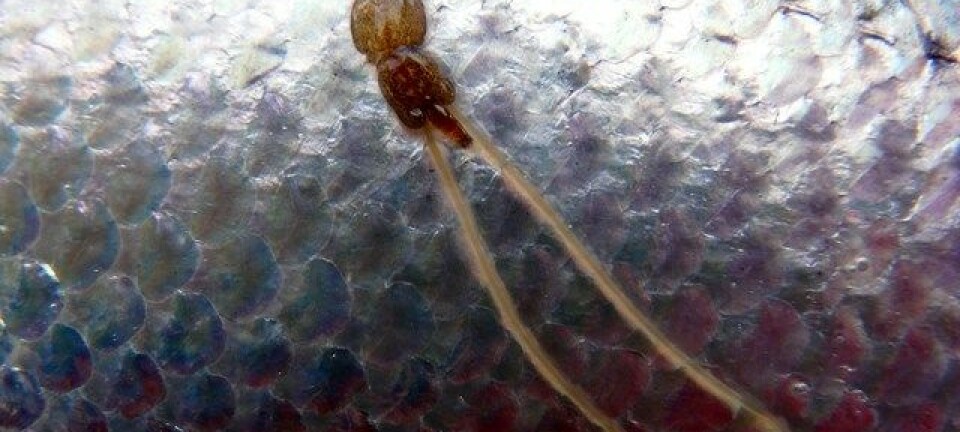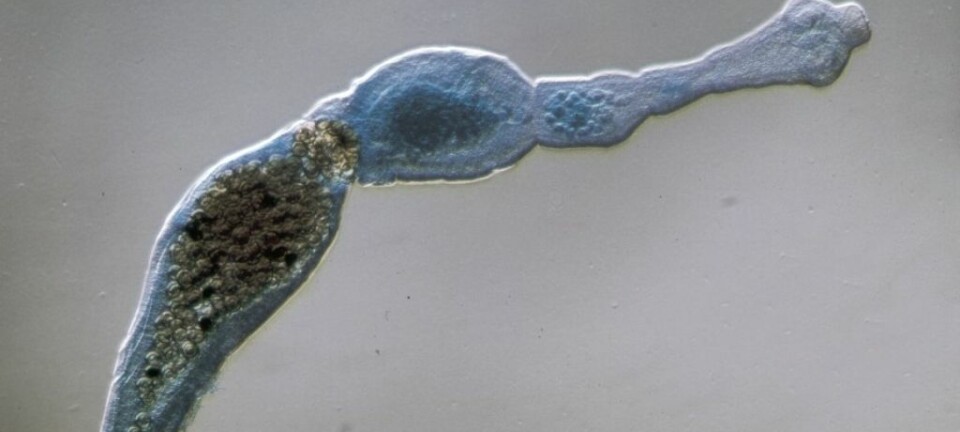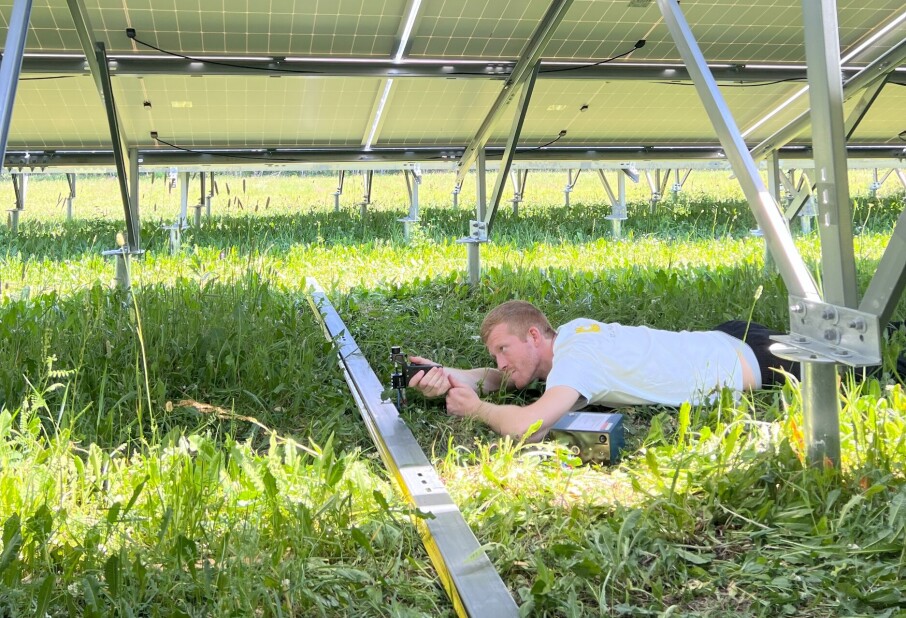
Missing link found on sharks
On any visit to a rocky seashore, you are likely to spot barnacles, unoffendingly stuck to hard surfaces. But barnacles in a fjord in Norway have become parasites that eat fish through feeding stems.
Denne artikkelen er over ti år gammel og kan inneholde utdatert informasjon.
Charles Darwin made notes in 1851 about an odd observation:
Zoology Professor Japetus Steenstrup of the University of Copenhagen had written to the “discoverer” of evolution about barnacles in the northern waters of Norway.
Darwin’s response was to write that this strange creature could be a real ‘missing link’ – in this case an organism in the midst of an evolutionary leap from living as a water filtering feeder to being a parasite.
Darwin made more than enough historic discoveries during his voyage on the the HMS Beagle. Had he been able to tag along to the Sognefjord with researchers from the University of Bergen in 2014, he could have also confirmed his suspicion about this odd barnacle.
Anelasma squalicola
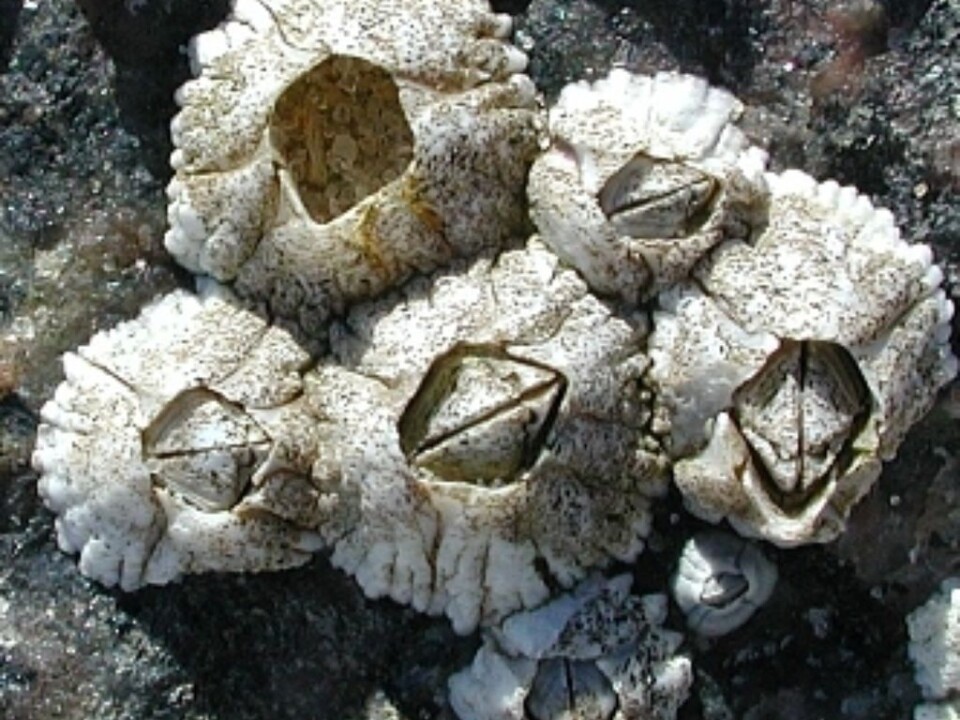
The parasitic barnacle which attaches itself to the back of these sharks, which live at depths from 100m to 1,000m in the Norwegian fjord, has been given the Latin name Anelasma squalicola.
The A. squalicola embeds a stalk, the same appendage goose barnacles normally use to cling to rocks or other solid objects like pilings, into the flesh of the unfortunate fish. Usually this barnacle finds a safe spot in front of the first of the two dorsal fins on the 60cm shark.
Shark sucker
A barnacle attached to rocks on the seashore has six pairs of filtering limbs which it uses to comb for plankton that float by.
The barnacle that preys on sharks has transformed its stalk into a combination of an anchor and a sucker that slurps in nutrients from the inside the shark.
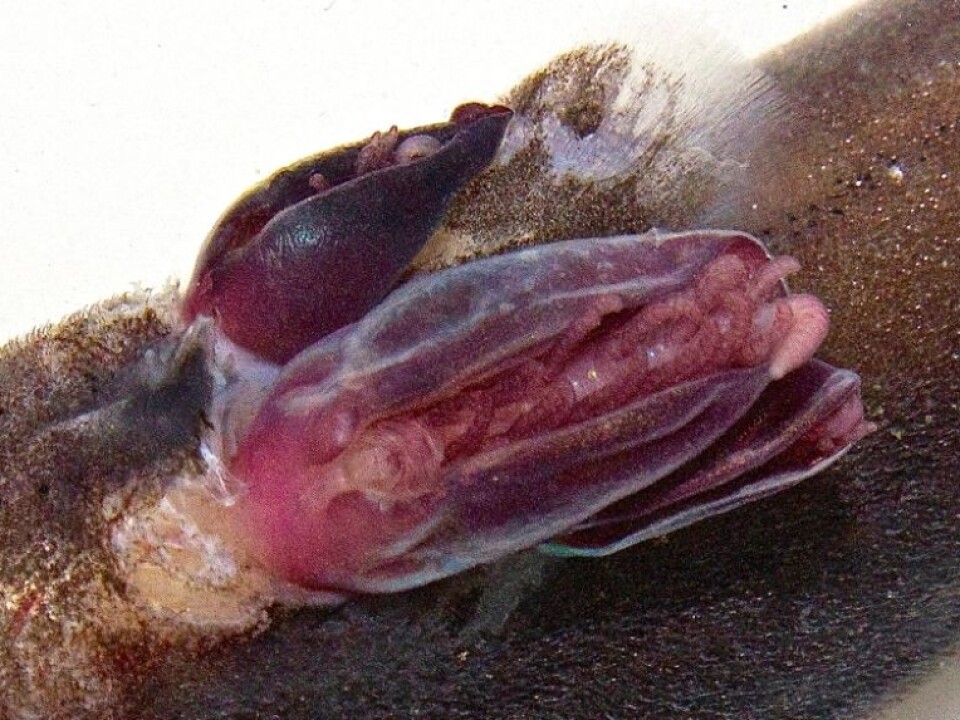
“The species has thus passed a crucial evolutionary juncture. It has abandoned the conventional method of feeding by filtering water and switched to a parasitic lifestyle,” says Henrik Glenner, a professor of marine zoology at the University of Bergen (UiB).
The creature that rides on the back of the dogfish-type sharks has retained a lot of characteristics which are similar to its relatives on rocks clustering shores and tidal pools.
Except for a major difference – it no longer has a shell.
Quantaties in the Sognefjord
The UiB scientists are not the first to have been fascinated by A. squalicola. But the barnacle has been deemed a rare oddity and received little interest after Steenstrup and Darwin.
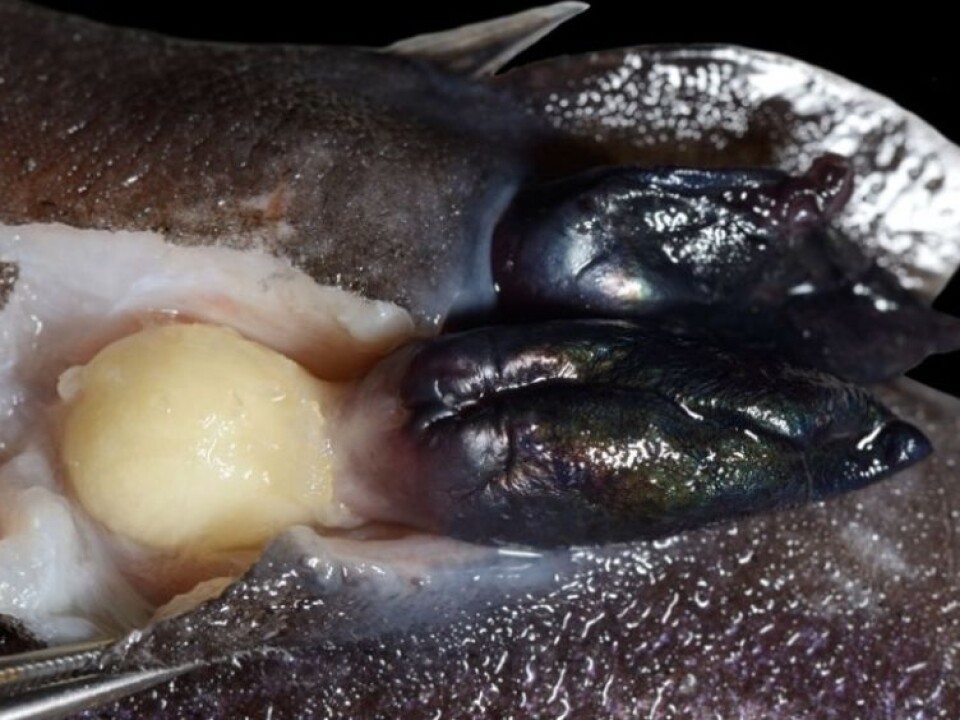
The researchers in Bergen have now discovered that in a limited area of the deep Sognefjord A. squalicola abound as shark riders.
“Here we’ve found a perfect place for interdisciplinary research on something as rare as a living ‘missing link’,” says Glenner.
“We can now conduct research on the biology, ecology and physiology of an organism that is in the midst of an evolutionary leap.”
His colleagues in this endeavour are the researchers David Rees, Christoffer Noever, Jens T. Høeg and Anders Ommundsen.
Can give an answer to evolution

Clusters of barnacles are no strangers to those who have boats in saltwater, or to whales. They also cling to sea turtles and even atop jellyfish.
But despite riding on other animals, they live a traditional barnacle life, filtering water that passes by them. None have developed a way of using their anchoring device to extract nutrients.
One might think that the A. squalicola found on velvet-belly lantern sharks in the Sognefjord would have descended from other barnacles that attach to sea creatures.
Not so.
Relative on Japanese dinner tables
The scientists from UiB marvelled to discover that this parasite in a Norwegian fjord is a close relative of the barnacle Capitulum mitella, which lives in Southeast Asia.
Even more remarkable, then, that C. mitella is neither parasitic nor a deep-sea denizen. In Southeast Asia it lives in tidal zones, combing the sea for plankton – at least until it winds up on the dinner plates of Japanese gourmands.
“Indeed, the connection between the two is really surprising. It takes our understanding of the mysterious organism in the Sognefjord forward by several strides,” says the zoology professor.
“We know that the last common ancestor of A. squalicola in the Sognefjord and C. mitella in Southeast Asia was a completely common barnacle that stuck to the shore.”
It neither lived in the depths nor lived as a parasite.
“This makes us conclude that our organism in the Sognefjord has been caught in the act, on its way to transforming from a filtering feeder to something fundamentally different, a parasite,” says Glenner.
The scientists in Bergen hope their research on the parasitic barnacle in the Sognefjord can help biologists find the answer to how evolutionary leaps in nature really occur.
“We’ve been given a unique research opportunity thanks to a large and stable stock of sharks in the Sognefjord that often have these ‘missing link’ organisms riding on their backs.”
------------
Read the Norwegian version of this article at forskning.no
Translated by: Glenn Ostling







